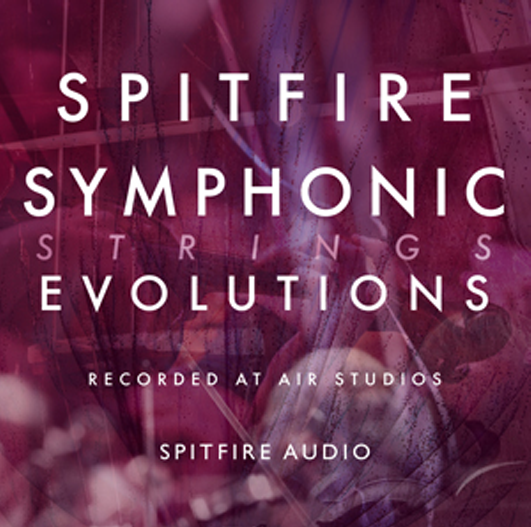
优美、可立即演奏的交响乐弦乐纹理
作曲家永远被要求制作有意义的音乐,这些音乐在对话中很容易坐下来,而不会将注意力从场景中转移开。我们的 Evo Grid 技术基于易于使用的进化引擎,可让您从最简单的编曲中创作和演奏引人入胜、复杂和情感丰富的音乐。Spitfire Symphonic Strings Evolutions 将这一概念与在传奇的 Air Studios 录制的交响乐大小的弦乐部分的威严结合在一起。
作为一种分层工具,它可以通过优雅、现代和渐进的管弦乐技术使静态编曲栩栩如生,并解决了媒体构图中较困难的方面之一:从一种状态到另一种状态的有效渐进过渡。动手网格和对无穷无尽的纹理层的访问使这个鼓舞人心、灵活和触觉的琴弦库成为必备品。
Evo Grid 与交响弦乐相遇
通过 Evo Grid 1 和 Evo Grid 2,我们向世界释放了一种全新的长弦发音方式。通过在键盘的整个音域中录制许多随时间变化或变异的非常长的音符,并允许将不同的演变(或 Evos)分配给不同的音域,Spitfire 创造了一种全新的方式,让一线作曲家可以创造深刻的最终结果;这是一款可演奏性很强的乐器,可以在您演奏时动态塑造,当您面临几乎不可能的最后期限时,这是一个完美的工具。
通过引入对声音进行分类的“骰子功能”,以便可以在键盘上随机分配不同的 Evo,Spitfire 还发现了一种在任何单个实例中提供几乎无限数量的排列的方法。从闪闪发光和起伏的美感到渐进而无情的建筑张力,从掷骰子中获得灵感,发现一种与以前完全不同的乐器。此外,还可以选择在参数内随机化,以更倾向于“美丽”、“恐怖”等。
轰动一时的弦乐
当你想让你的样本听起来像真正的交易时,你会怎么做 去他们实际记录乐谱的地方,并使用相同的演奏者和人。
与喷火交响弦乐团在同一场会议期间录制,有60位明星演奏家:16把第一小提琴,14把第二小提琴,12把中提琴,10把大提琴和8把贝斯;都是从伦敦最好的管弦乐队中精心挑选的。演奏由当代著名音乐会作曲家本·福斯凯特(Ben Foskett)编排的48首Evos,这个图书馆充满了美丽而紧张的交响弦乐部分;所有这些都在现场进行,就像在乐谱会议中一样。由于每个 Evos 都可以在多个范围内演奏,因此几乎无限数量的交响乐弦乐组合和织体层可用于作曲。
在Air Studios的The Hall的受人尊敬的音响中捕捉,使用与主要配乐相同的设备,结果是情感和音乐性的。通过 2 英寸 Studer 磁带机以 96kHz 进行数字录制,配备无价的电子管和带状麦克风,Neve Montserrat 前置放大器进入 Neve 88R 办公桌;这里不遗余力。
Evo 流程
1.编排一系列 Evos(随时间变化的超长音符)
2。从寄存器中的低到高
3 记录这些。对不同的 Evos
4 重复此操作。每个 Evo 都放置在 Evo 网格的一列中,每行代表一个音高范围(即 x = Evo,y = 音高范围)
5。通过激活 Evo 网格上的“钉子”来选择哪个 Evo 位于哪个范围内(当一个音符被执行或编程时,它会触发与该范围挂钩的 Evo)
6。您无需自己选择钉子 – 使用骰子功能随机化,该功能为您提供了玩
7 的几个标准。确保保存,因为有近乎无限数量的可能组合
Evo Grid
基于 EMS VCS3 合成器,这个非凡而独特的界面允许即时满足和定制。只需点击 1 或 2 次,您将拥有完全独特和鼓舞人心的东西。滚动 Evo 网格以发现并激活不可见的 Evo。平移和调整每个 Evo 以实现完美融合。打入或打出 3 个有用的调制器和效果器。混合您的麦克风位置,全部来自前面板。
概览面板
这是旋律乐器的主界面。它的默认视图显示所有可用的演奏技术,有一个简单的麦克风混音器,并包括主要功能控制器。
Beautiful, instantly playable symphonic string textures
Composers are forever being asked to make meaningful music that sits easily under dialogue without diverting attention away from the scene. Our Evo Grid technology, based on an easy-to-use evolution engine, allows you to create and perform engaging, sophisticated and emotional music from the most simplistic of arrangements. Spitfire Symphonic Strings Evolutions marries this concept with the majesty of a symphony-sized string section recorded at the legendary Air Studios.
As a layering tool it can bring static arrangements to life with elegant, modern and progressive orchestral techniques, plus solve one of the harder aspects of media composition: effective gradual transitions from one state to another. The hands-on grid and access to endless amount of textural layers make this inspirational, flexible and tactile string library a must-have.
Evo Grid meets Symphonic Strings
With Evo Grid 1 and Evo Grid 2, we unleashed on the world a totally new way of working with long strings articulations. By recording a number of very long notes that change or mutate over time across the entire range of the keyboard and by allowing different evolutions (or Evos) to be assigned to different registers, Spitfire created a whole new way that A-list composers could create profound end results; a highly playable instrument that can be shaped dynamically as you play, this is the perfect tool for when you’re pushed hard up against those almost impossible deadlines we all face.
By introducing a ‘dice function’ with sounds categorised so that different Evos could be randomised across the keyboard, Spitfire also discovered a way of offering up an almost infinite number of permutations within any single instance. From shimmering and undulating beauty to gradual and relentless building tension, be inspired by rolling the dice to discover a completely different instrument than before. Also, there’s the option to randomise within parameters to lean more towards ‘beauty’, ‘horror’ etc.
Blockbuster sounding strings
What do you do when you want your samples to sound like the real deal Go to the place where they actually record the scores and use the same players and people.
Recorded during the same session as for Spitfire Symphonic Strings, this features 60 star players: 16 1st violins, 14 2nd violins, 12 violas, 10 cellos & 8 basses; all handpicked from the best orchestras in London. Performing 48 Evos orchestrated by established contemporary concert composer Ben Foskett, this library is rich with both beautiful and tense symphonic string parts; all performed in situ as they would be in a score session. With each of the Evos playable across multiple ranges, an almost infinite amount of symphonic string combinations and textural layers are available for composition.
Captured in the revered acoustic of The Hall at Air Studios, using the same equipment used for the major scores, the result is emotive and musical. Digitally recorded at 96kHz via a 2” Studer tape machine, with priceless valve and ribbon mics, Neve Montserrat pre-amps into a Neve 88R desk; no expense has been spared here.
The Evo process
1. Orchestrate a series of Evos (very long notes that change over time)
2. Record these from low in the register to high up
3. Repeat this for the different Evos
4. Each Evo is placed in one column of the Evo Grid, with each row representing a pitch range (i.e. x = Evo, y = Pitch Range)
5. Select which Evo sits in which range by activating ‘pegs’ on the Evo Grid (when a note is performed or programmed, it triggers the Evos pegged into that range)
6. You needn’t select pegs yourself – randomise with the dice function that gives you several criteria to play with
7. Make sure you save as there are a near infinite number of possible combinations
The Evo Grid
Based on the EMS VCS3 synth, this extraordinary and unique interface allows for instant gratification and customisation. With 1 or 2 clicks, you will be armed with something totally unique and inspiring. Scroll the Evo Grid to discover and activate Evos that are not visible. Pan and tweak each Evo for perfect blending. Punch in or out 3 useful modulators and effects. Mix your mic positions, all from the front panel.
The overview panel
This is the main interface for melodic instruments. Its default view displays all available playing techniques, has a simple microphone mixer and includes the main feature controllers.
P2P

![[怀旧经典爵士乐音源] Big Fish Audio Vintage Big Band [KONTAKT](10.1GB)](https://www.shuziyinpin.vip/wp-content/uploads/2025/12/big-fish-audio-vintage-big-band.jpg)
![[低音提琴精选采样音源]SampleTraxx Double Bass Essentials [KONTAKT, WAV](607.22MB)](https://www.shuziyinpin.vip/wp-content/uploads/2025/12/1766903218_sampletraxx-double-bass-essentials.jpg)
![[嘻哈说唱素材Kontakt音源] OGX Telesma [WAV, MiDi, KONTAKT](541MB)](https://www.shuziyinpin.vip/wp-content/uploads/2025/12/OGX-Telesma.png)
![[柏林铜管乐器音色库 16位简装版] Orchestral Tools Berlin Brass v1.1 (16 Bit) [KONTAKT](123GB)](https://www.shuziyinpin.vip/wp-content/uploads/2025/12/Berlin-Brass-v1.1.png)
![[柏林木管乐器音色库] Orchestral Tools Berlin Woodwinds v3.0.7 [KONTAKT](158.49GB)](https://www.shuziyinpin.vip/wp-content/uploads/2025/12/orchestral-tools-berlin-woodwinds.jpg)
![[柏林弦乐音色库] Orchestral Tools Berlin Strings v2.5 (16 Bit) [KONTAKT](111GB)](https://www.shuziyinpin.vip/wp-content/uploads/2025/12/27122581_orchestral-tools-berlin-strings.jpeg)

评论0